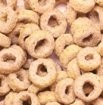Codex adopts definition of ‘fiber’
The provision, adopted By the CAC during a meeting held in Rome, Italy, last week, follows the establishment of the definition in 2008 by the Codex Committee on Nutrition and Foods for Special Dietary Uses (CCNFSDU).
The new definition is consistent with the previous debated Codex definition in that it describes fiber as one of three categories of carbohydrate polymers: Naturally occurring edible carbohydrate polymers; carbohydrate polymers obtained from food raw material by physical, enzymatic or chemical means; and synthetic carbohydrate polymers.
Much-debated definition
The previous definition that Codex had been debating for over 15 years recommended that the carbohydrate polymers must have a degree of polymerization not lower than three (to exclude mono- and disaccharides).
In contrast, the definition adopted last week states that the carbohydrate polymers must have ten or more monomeric units. However, a footnote included in the provision essentially dismisses this recommendation, by suggesting that the “decision on whether to include carbohydrates from three to nine monomeric units should be left to national authorities”.
Analytical methods
In addition, the current provision does not provide guidelines on the methods of analysis that must be used for dietary fiber, compared to the previously debated definition which was based on the method developed by the Association of Official Analytical Chemists (AOAC).
This created more debate on an already contentious issue, as some members said the new definition could not be applied if the related method of analysis was not available.
The Secretariat responded that although a method for fiber had existed previously, there was no agreement on the definition corresponding to this method. Therefore, “following extensive discussions and scientific advice from FAO/WHO”, the Commission decided to finalize the definition for adoption.
The range of different methods are currently under review and are expected to be decided on in the next meeting, to be held in the fall, a member of the Codex secretariat told NutraIngredients-USA.com.
Fiber footnote
A footnote to the definition of fiber as carbohydrate polymers reads:
“When derived from a plant origin, dietary fiber may include fractions of lignin and/or other compounds when associated with polysaccharides in the plant cell walls and if these compounds are quantified by the AOAC gravimetric analytical method for dietary fibre analysis : Fractions of lignin and the other compounds (proteic fractions, phenolic compounds, waxes, saponins, phytates, cutin, phytosterols, etc.) intimately "associated" with plant polysaccharides are often extracted with the polysaccharides in the AOAC 991.43 method.”
“These substances are included in the definition of fibre insofar as they are actually associated with the poly- or oligo-saccharidic fraction of fibre. However, when extracted or even re-introduced into a food containing non digestible polysaccharides, they cannot be defined as dietary fibre. When combined with polysacchrides, these associated substances may provide additional beneficial effects (pending adoption of Section on Methods of Analysis and Sampling).”
‘Source of’ or ‘high in’…?
The Codex provision, which was first proposed last year during a meeting of the CCNFSDU, held in Cape Town, South Africa, last November, also includes recommendations on levels of fiber that must be used in order to make ‘source of’ or ‘high in’ claims. NutraIngredients-USA.com will report on that tomorrow.
To access the report, click here.
To read about global definitions of dietary fiber, click here.







